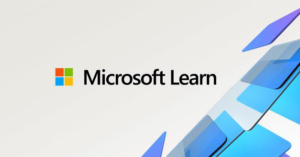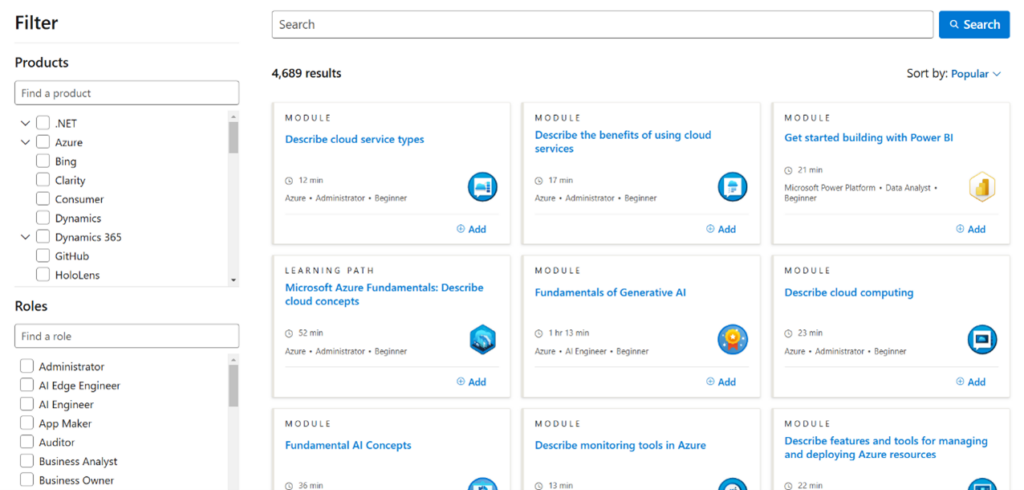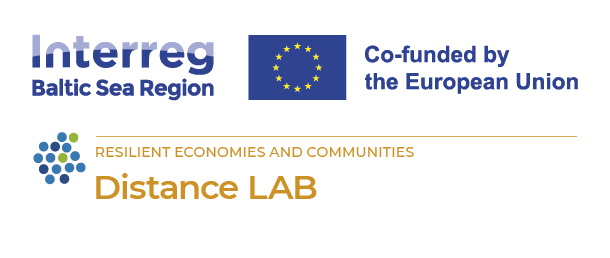Remote Learning Opportunities & Skills Fulfillment
Explore high quality online learning opportunities and business support programmes
Purpose and objective
MS Learn is an online learning platform where individuals can get free, interactive, and hands-on learning experiences in developing skills and knowledge related to Microsoft technologies, products, and services, starting from beginner level up to advanced level. After completion of the module, learning path, or instructor-led training a certification of completion is awarded.

Benefits for applicants
- All learning material available on the platform is free of charge.
- Possibility to learn at own pace and come back to the last learning point at any time.
- Many modules offer environments for learners to test the actual tool of interest in real-world scenarios.
- Learning opportunities for all levels and backgrounds.
- Learning paths prepare students for MS certification exams.
- Community guidelines and forums for individuals to seek help and support.
Application process
The learning journey in the MS Learn platform starts with account creation. If the user already has an MS account, then that account can be used for signing in the MS Learn and creating an MS Learn profile which will record and store learning activities. For more information and customization of the profile refer to MS Learn profile setting guide.
In the platform, individuals can browse modules, instructor-led training, and learning paths by career paths that individual is pursuing or by MS products of interest. To see all available modules, instructor-led training and training paths go to browse all training.

In the browse all training page, at the left side of the page, you can filter the training by product of MS, by roles the individual intends to master, levels of individual, subjects of IT field, and types of training.

In the catalogue of all available trainings, you will see three different types of training: module, instructor-led training, and learning path.


A module is typically a small (less than an hour) web-based course that provides information about services and technologies. Each module consists of multiple units, which are webpages of actual training content provided in various forms (text, video, knowledge checks, interactive experiences). Each module is a part of one or several Learning paths, which is a collection of related modules. (See picture on left)
After selecting either a module, instructor-led training, or learning path you can start your learning journey by clicking on the desired course and pressing the Start button. (see picture below)

Each module, instructor-led training, and learning path has assigned experience points you can get after completion, which can be seen on the top right corner of the training page. The experience points contribute to your experience level. (see the example in the picture below)

More information on your achievements, completed courses, and credentials can be found on your profile page, which can be accessed by clicking on the top right corner badge of credentials and pressing the Profile button. (See picture below)
Artificial Intelligence
In the rapidly evolving digital landscape, Artificial Intelligence (AI) and Machine Learning (ML) have emerged as a transformative force, redefining the way businesses operate, innovate, and compete. The integration of AI technologies into business processes is no longer a futuristic concept but a strategic approach for companies seeking to gain a sustainable competitive advantage by enhancing operational efficiency, minimizing costs, and delivering exceptional customer experiences.
Microsoft product catalogue includes AI tools that can be used for enhancing business practices such as Azure, Power BI, and Dynamics 365. MS Azure AI offers a wide range of AI services and cognitive APIs that enable businesses to build intelligent applications capable of seeing, hearing, speaking, understanding, and interpreting human needs. Power BI leverages AI to transform data into actionable insights, facilitating informed decision-making across all levels of an organization. Dynamics 365, with its AI-driven insights, optimizes customer engagement and streamlines operations, enabling businesses to anticipate customer needs and deliver personalized experiences.
Artificial Intelligence for Beginners
About the course
In the course, participants will learn core concepts and principles of AI, ML, regression models, Azure machine learning tools, and more. At the end of the modules, students will have a self-check questionnaire to assess and test their knowledge.
Required experience level and benefits of the course
The course is for beginners who want to learn more about AI, and ML and how to use these technologies with MS provided tools such as MS Azure.
Brief content of the course
The course is divided into four blocks:
- Introduction to data, AI, ML and Python
- Machine learning models and data
- Machine learning in MS Azure, regression models
- Natural language processing, computer vision and Azure Open AI.
Duration of the course
Self-paced learning, around 40 hours of material.
Course Content
Introduction to AI, and ML
- How does artificial intelligence (AI) work?
- What is machine learning?
- Artificial intelligence (AI) machine learning (ML)
- What Is Deep Learning?
- Enable business users with key AI use cases
- Responsible AI principles
Machine Learning Models and Data
- Introduction to data for machine learning
- Refine and test machine learning models
- Cross Validate Model
- Confusion matrix and data imbalances
Machine Learning in MS Azure, Regression Models
- What is Azure Machine Learning?
- What is Azure Machine Learning designer (v1)?
- Use Automated Machine Learning in Azure Machine Learning
- Download: Machine Learning Algorithm Cheat Sheet
- How to select algorithms for Azure Machine LearningURL
- Train and understand regression models in machine learning
- Train and evaluate regression models
- Tutorial: Designer – train a no-code regression model
- Clean Missing Data component
- Evaluate Model component
- Two-Class Decision Forest component
- Two-Class Support Vector Machine component
- Linear Regression component
Natural language processing, computer vision and Azure Open Ai
Artificial Intelligence with Python
About the course
In the course, participants will learn core concepts and principles of AI, ML, regression models, Azure machine learning tools, and more. At the end of modules, students will have a self-check questionnaire to assess and test their knowledge.
Required experience level and benefits of the course
The course is intermediate-level for those who want to learn more about AI, ML and how to use these technologies with MS provided tools such as MS Azure.
Brief content of the course
The course is divided into 4 blocks :
- Introduction to AI, and
- Machine learning models and
- Machine learning in MS Azure, regression
- Natural language processing, computer vision and Azure Open AI.
Duration of the course
Self-paced learning, around 50 hours of material
Course content
Introduction to AI, and ML
- Introduction to machine learning: types, algorithms and lifecycle
- Working with quality data
- Data exploration and preparation with Python
Machine learning models and data
- Introduction to regression analysis
- Classical machine learning model blueprint
- Train, evaluate, and refine a model
Machine learning in MS Azure, regression models
- Create and understand classification models in machine learning
- Confusion matrix and data imbalances
- Measure and optimize model performance with ROC and AU
Natural language processing, computer vision and Azure Open Ai
Data analysis and visualization tools
Data analysis and visualization tools are an important part of the business decision making process. With proper techniques used and tools at hand, business managers can make informed decision making. Moreover, these tools can be valuable not only for top managers but also for employees who have data driven jobs such as financial analysts, business analysts, marketing and sales employees, supply chain analysts and others. Being able to use raw data, transform and visualize it is a valuable ability that companies should possess to gain sustainable competitive advantage.
One of the most used tools for data analysis and visualization is MS Excel and MS PowerBI, which complement each other. Excel is an ideal space for creating, manipulating a performing complex calculations for small to medium-sized data sets, whereas PowerBI is a tool that can transform those data sets into visual material such as Key Performance Indicators, dashboards and graphs. The following course will give participants the necessary skills to start using PowerBI.
Business and Data Analysis
About the course
The course is designed to give participants both theoretical and practical knowledge in business and data analysis using Power BI and other MS applications.
Required experience level and benefits of the course
This beginner to intermediate level course will give participants knowledge on how to import data, clean data, model data and visualize it. The course is set to have materials that participants can go through and learn all the necessary information without prior experience
Brief content of the course
The course material is divided into 8 blocks:
- What is Power Platform and Power BI?
- Basics of Power BI reports and dashboards
- Start to work with data
- Power BI from a DevOps point of view
- Power Query, calculated fields and data risk mitigation
- DAX
- Visuals
- Publish and Share
Duration of the course
The course takes approximately 2 months at 10 hours per week to complete.
Course Content
1. What is Power Platform and Power BI?
- Discover Data analysis
- Introduction to Power Platform
- Introduction to Common Data Service
- Cloud Concepts – Principles of cloud computing
- Introduction to Power BI
- Explore what Power BI can do for you
- Get started building with Power BI
2. Basics of Power Bl reports and dashboards
- Create and share your first Power BI report
- Create a data-driven story with Power BI reports
- Create dashboards in Power BI
- How to build a simple dashboard
3. Start to work with data
- Get data in Power BI
- Perform analytics in Power BI
- Analyze data in Power BI
- Add measures to Power BI Desktop models
- Manage datasets in Power BI
- Explore data in Power BI
- Get data with Power BI Desktop
4. Power BI from a DevOps point of view
- Introduce the foundation pillars of DevOps: Culture and Lean Product
- Describe Power BI Desktop models
- Model data in Power BI
- Design a data model in Power BI
- Analyze DevOps Continuous Planning and Continuous Integration
- Define the foundation pillars of DevOps: Architecture and Technology
5. Power Query, Calculated fields and Data Risks Mitigation
- Clean, transform and load data in Power BI
- Add calculated tables and columns to Power BI Desktop models
- Implement row-level security
- Back up and restore databases
6. DAX
- Optimize a model for performance in Power BI
- Write DAX formulas for Power BI Desktop models
- Introduction to creating measures using DAX in Power BI
- Modify DAX filter context in Power BI Desktop models
- Use DAX iterator functions in Power BI Desktop models
- Use DAX time intelligence functions in Power BI Desktop models
7. Visuals
- Design with inclusivity in mind
- Work with Power BI visuals
- Use visuals in Power BI
- Work with AI visuals in Power BI
8. Publish and Share
Disclaimer
This information provided for the Distance Lab project is based on the information, pictures and sources available on the Elements of AI platform (https://www.elementsofai.com/). It contains links to other websites or content belonging to or originating from third parties or links to websites. Such external links are not investigated, monitored, or checked for accuracy, adequacy, validity, reliability, availability or completeness by us. We do not warrant, endorse, guarantee, or assume responsibility for the accuracy or reliability of any information offered by third-party websites linked through the site or any website and feature linked in any banner or other advertising, we will not be a party to or in any way be responsible for monitoring any transaction between you and third party providers of products or services.

